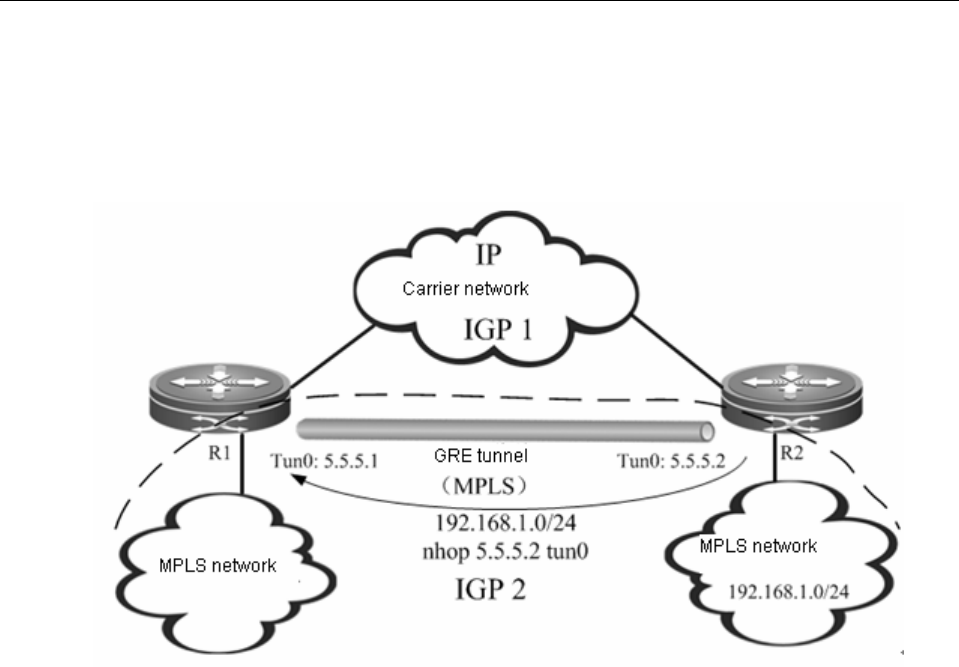
DES-7200 Configuration Guide Chapter 2 Configuring BGP IP VPN
2-58
configured in this scenario, and the number of static routes depends on the number of routing
prefixes to be introduced into the GRE tunnel. The scalability is not satisfactory.
Dual routing instances
Fig 20 Dual routing instances
In this scenario, there are two different routing instances on each endpoint device of the GRE
tunnel, as shown in Fig 20. One routing instance participates in route exchange in the carrier
network (IP), while the other routing instance will participate in the route exchange in the MPLS
network (including GRE tunnel link). By this time, R1 learns the route to remote MPLS network
through GRE tunnel, with egress interface being GRE tunnel. The traffic can be introduced into
GRE tunnel without configuring any static route.
Dual routing instances are actually dividing the network into different layers. As the upper-layer
network, MPLS network (including GRE tunnel) acts as the backbone network running
concurrent IGP instances, supporting MPLS and providing MPLS VPN service. As the
bottom-layer network, the carrier network (IP) is the local network between R1 and R2 and runs
independent IGP instances. If GRE tunnel is the "layer-3 interface" between R1 and R2, then the
IP network and the IGP instance between R1 and R2 will be the "layer-2 network" and "layer-2
link protocol" between R1 and R2, as they guarantees the link state of GRE tunnel. Such relation
can be indicated in Fig 21.


















